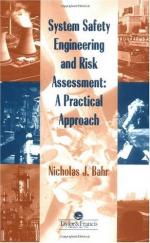|
This section contains 779 words (approx. 3 pages at 300 words per page) |

|
Safety is one of the primary goals of engineering. In most ethical codes for engineers safety is mentioned as an essential area of professional competence and responsibility.
In everyday language, the term safety is often used to denote absolute safety, that is, certainty that accidents or other harms will not occur. In engineering practice, safety is an ideal that can be approached, but never fully attained. What can be achieved is relative safety, meaning that it is unlikely but not impossible that harm will occur. The safety requirements in regulations and standards represent different (and mostly high) levels of relative safety. Industries with high safety ambitions, such as airway traffic, are characterized by continuous endeavors to improve the level of safety.
The ambiguity between absolute and relative safety is a common cause of misunderstandings between experts and the public. Both concepts are useful, but...
|
This section contains 779 words (approx. 3 pages at 300 words per page) |

|



